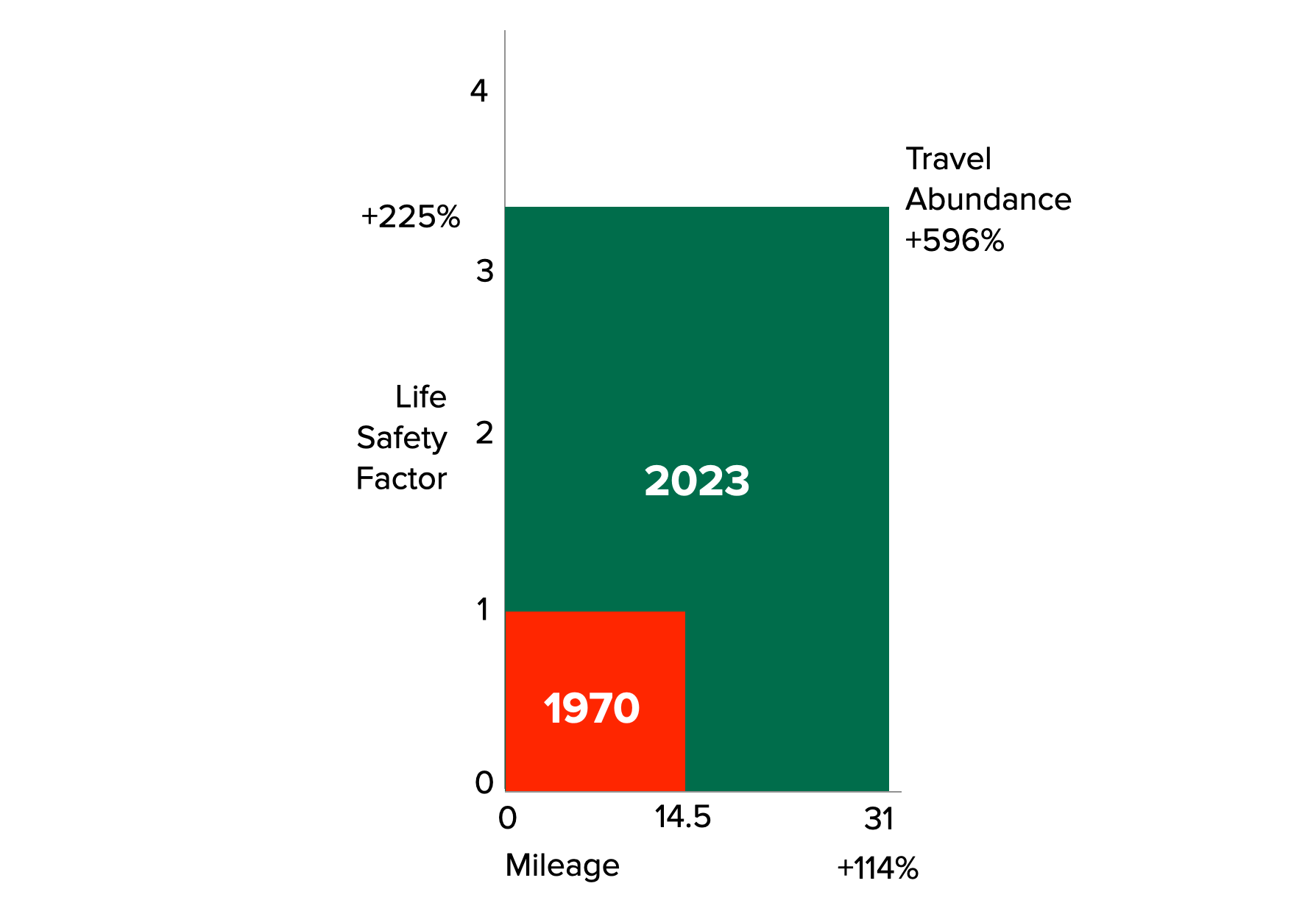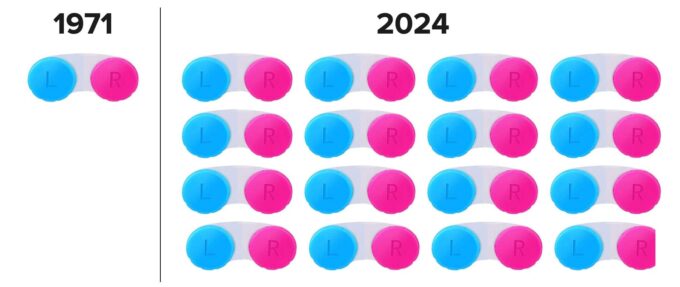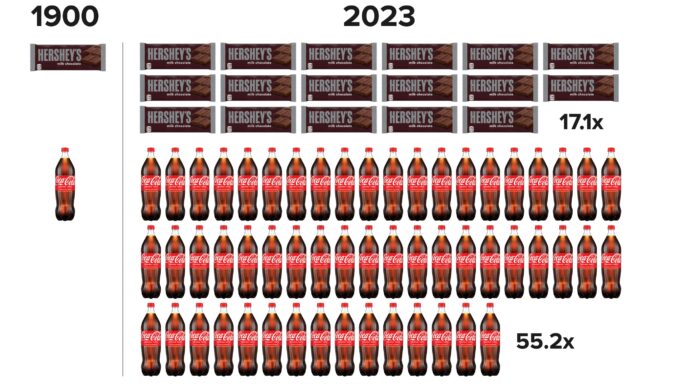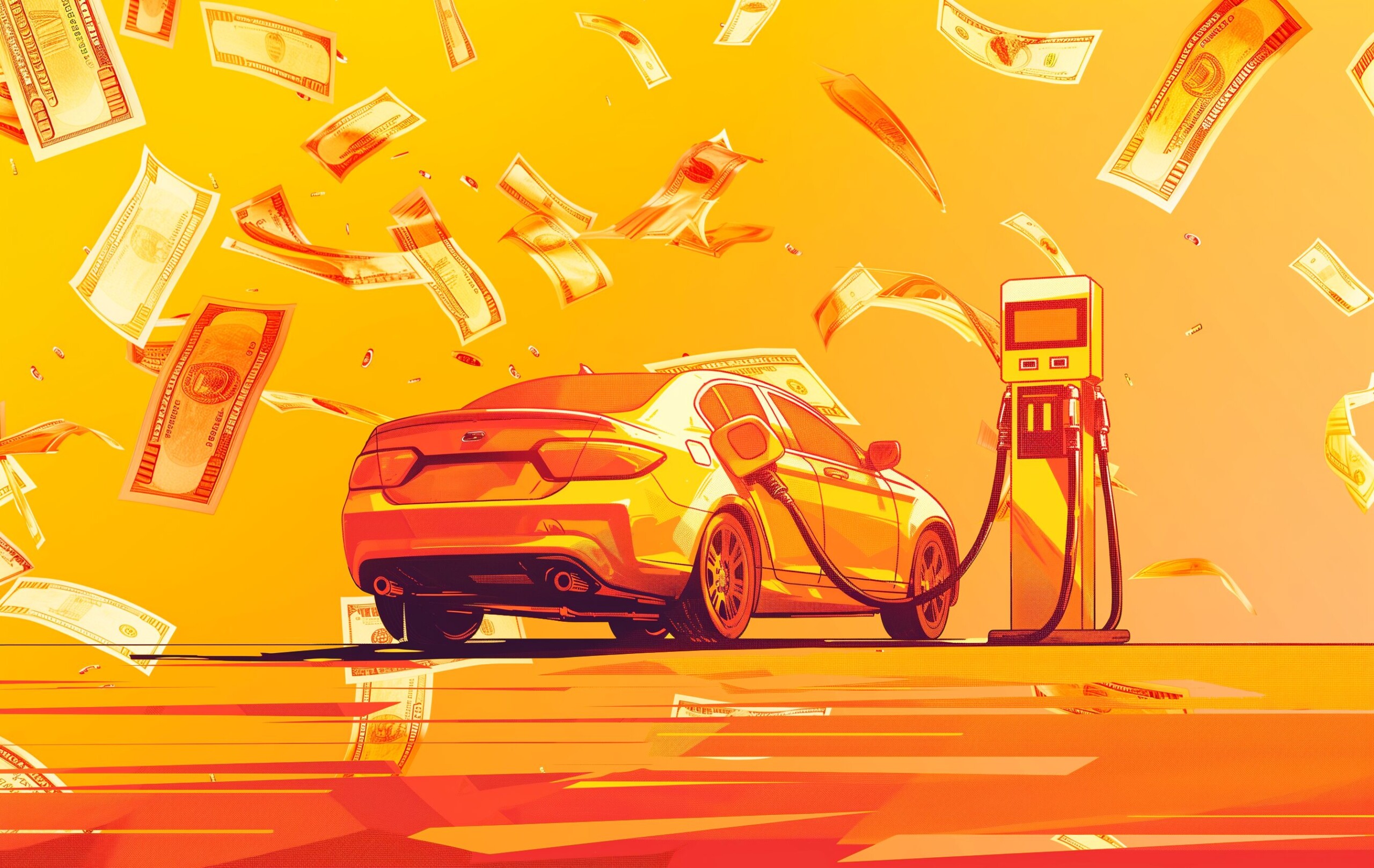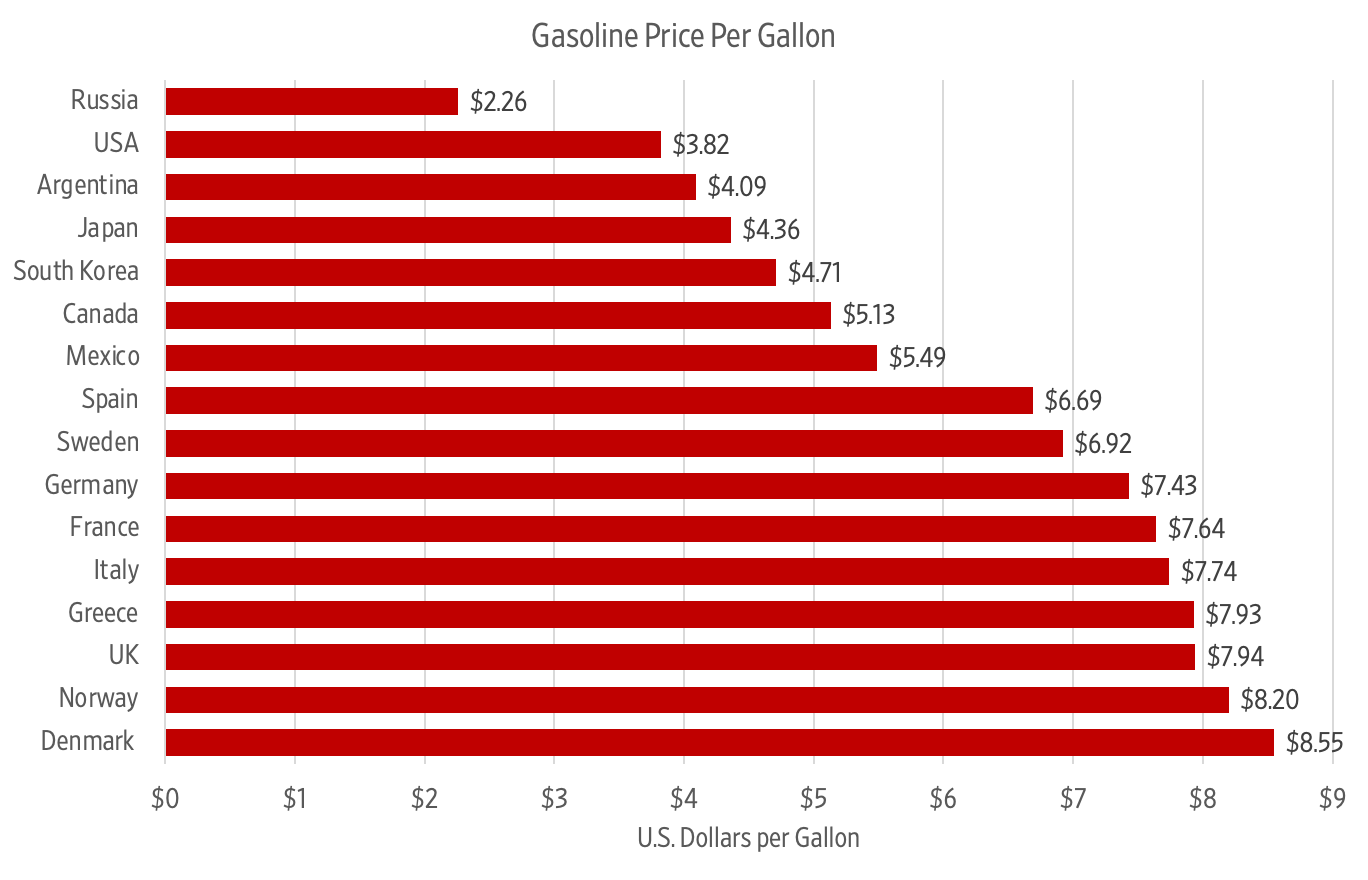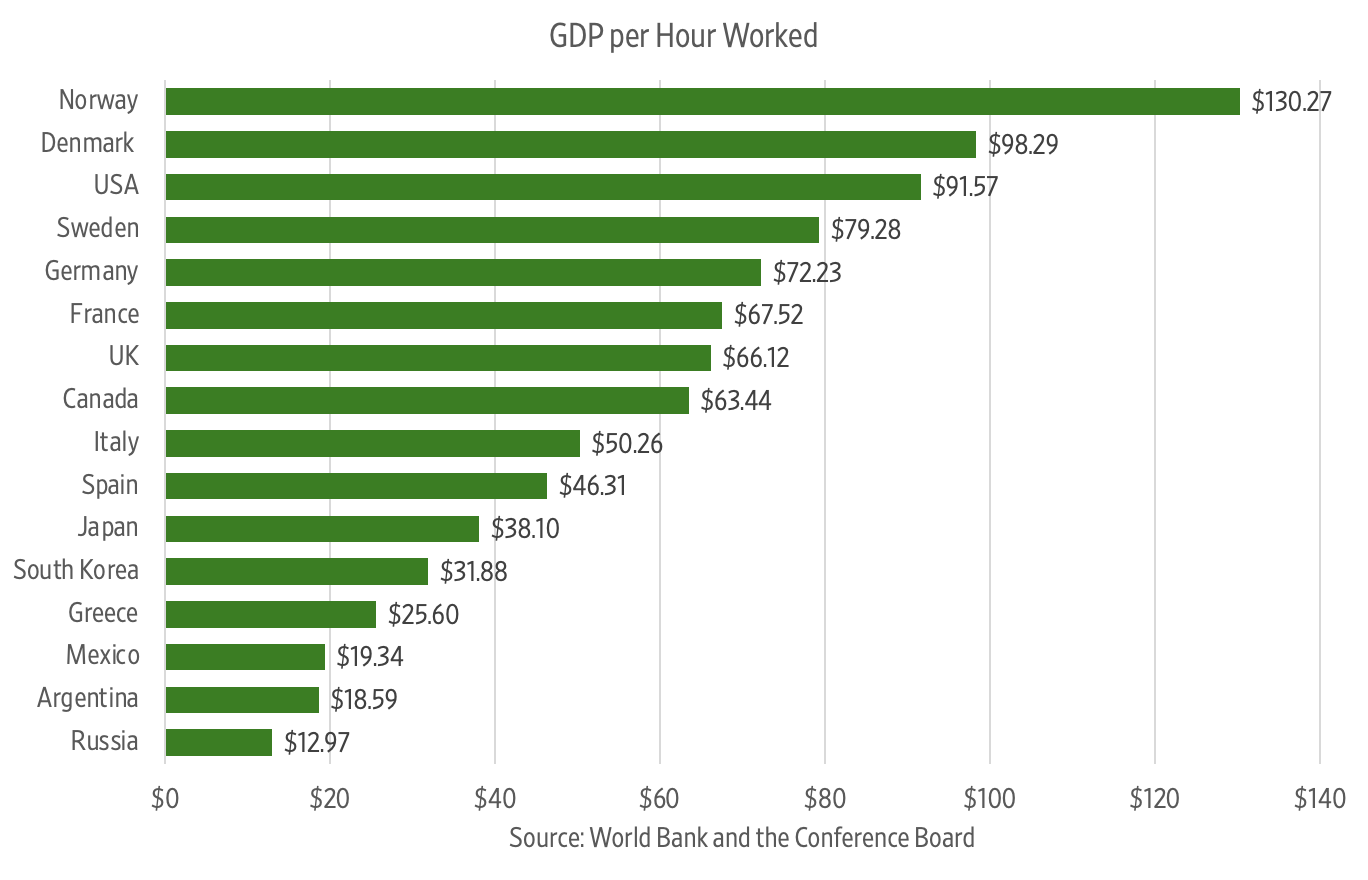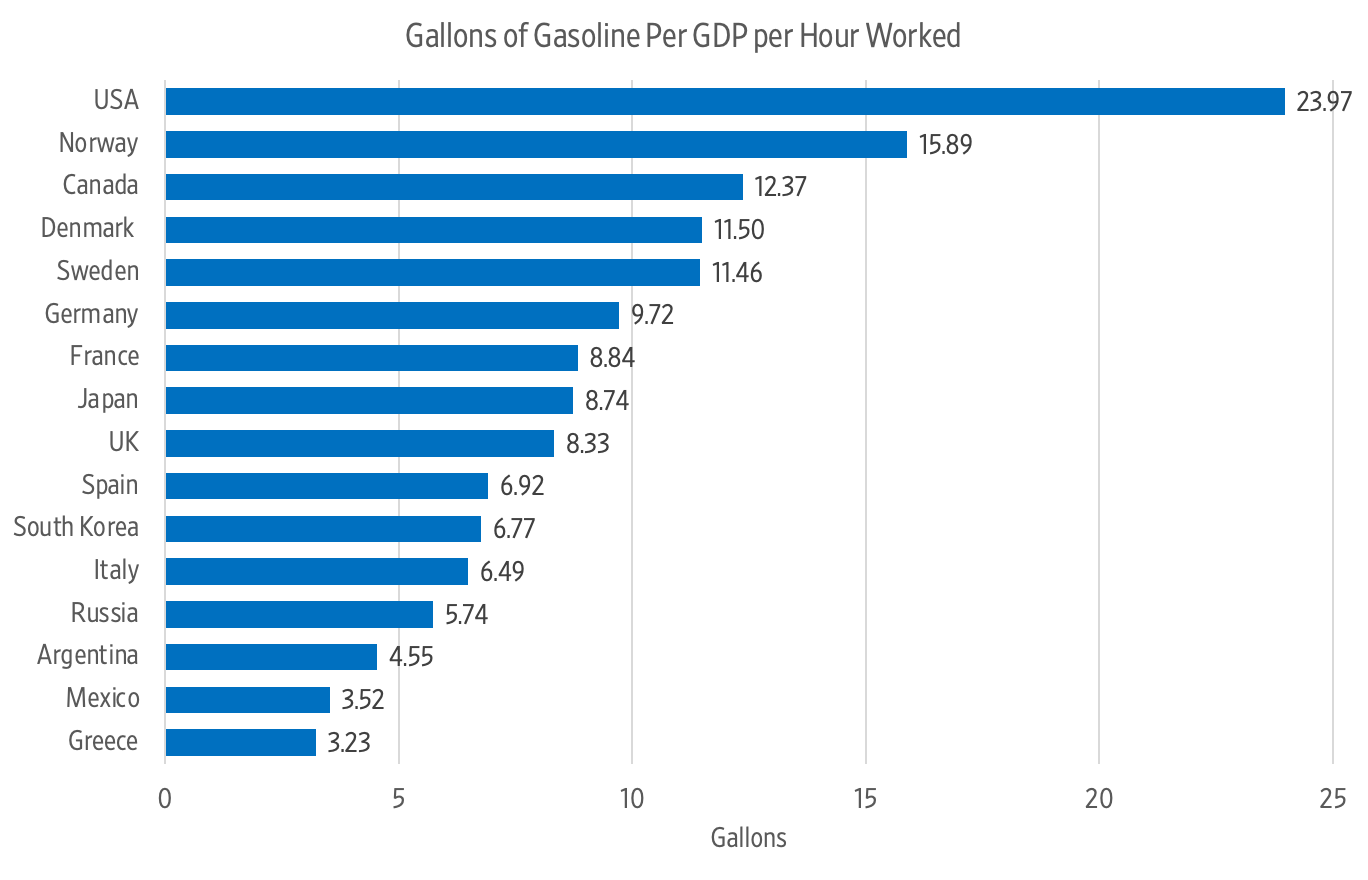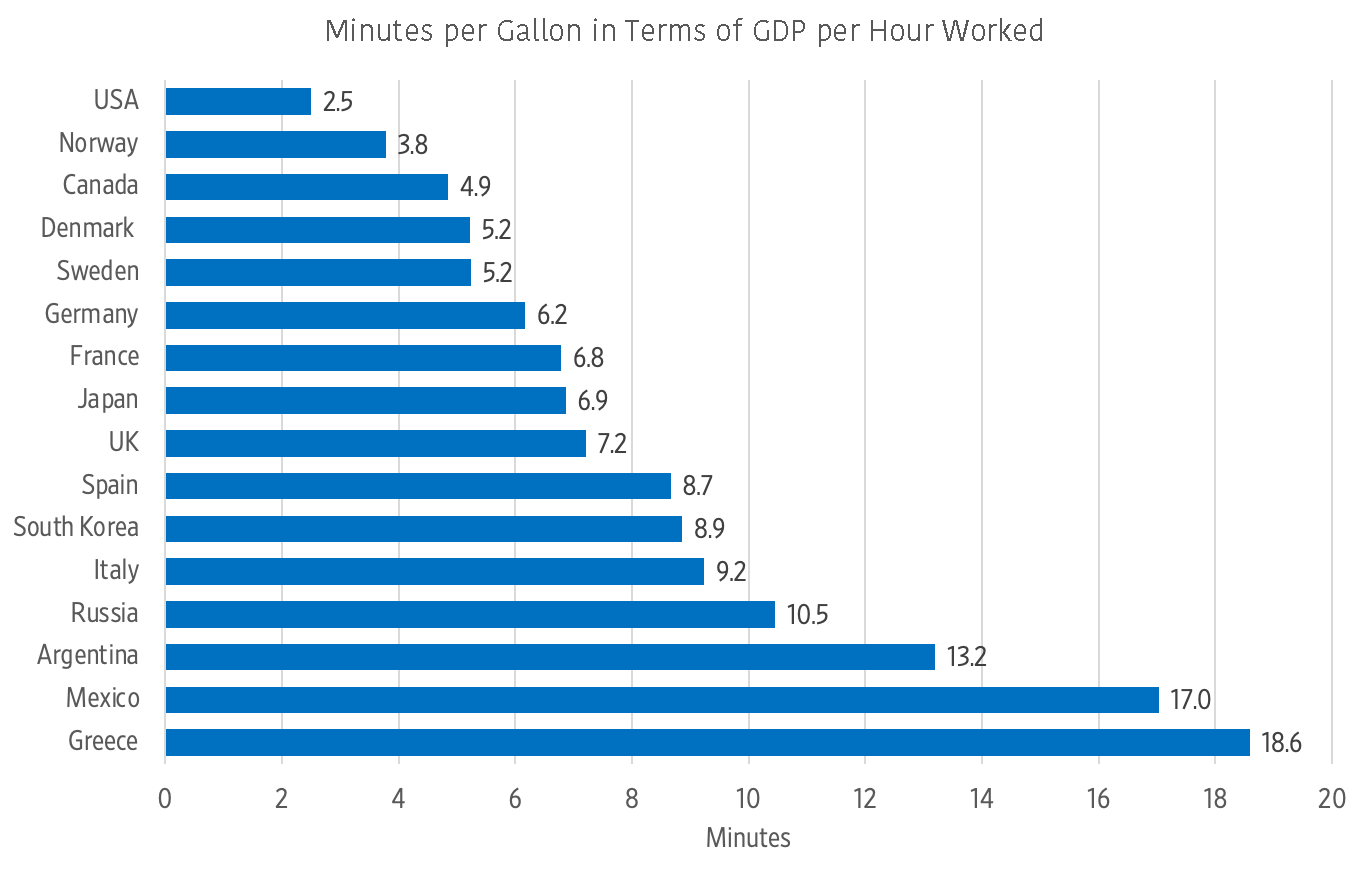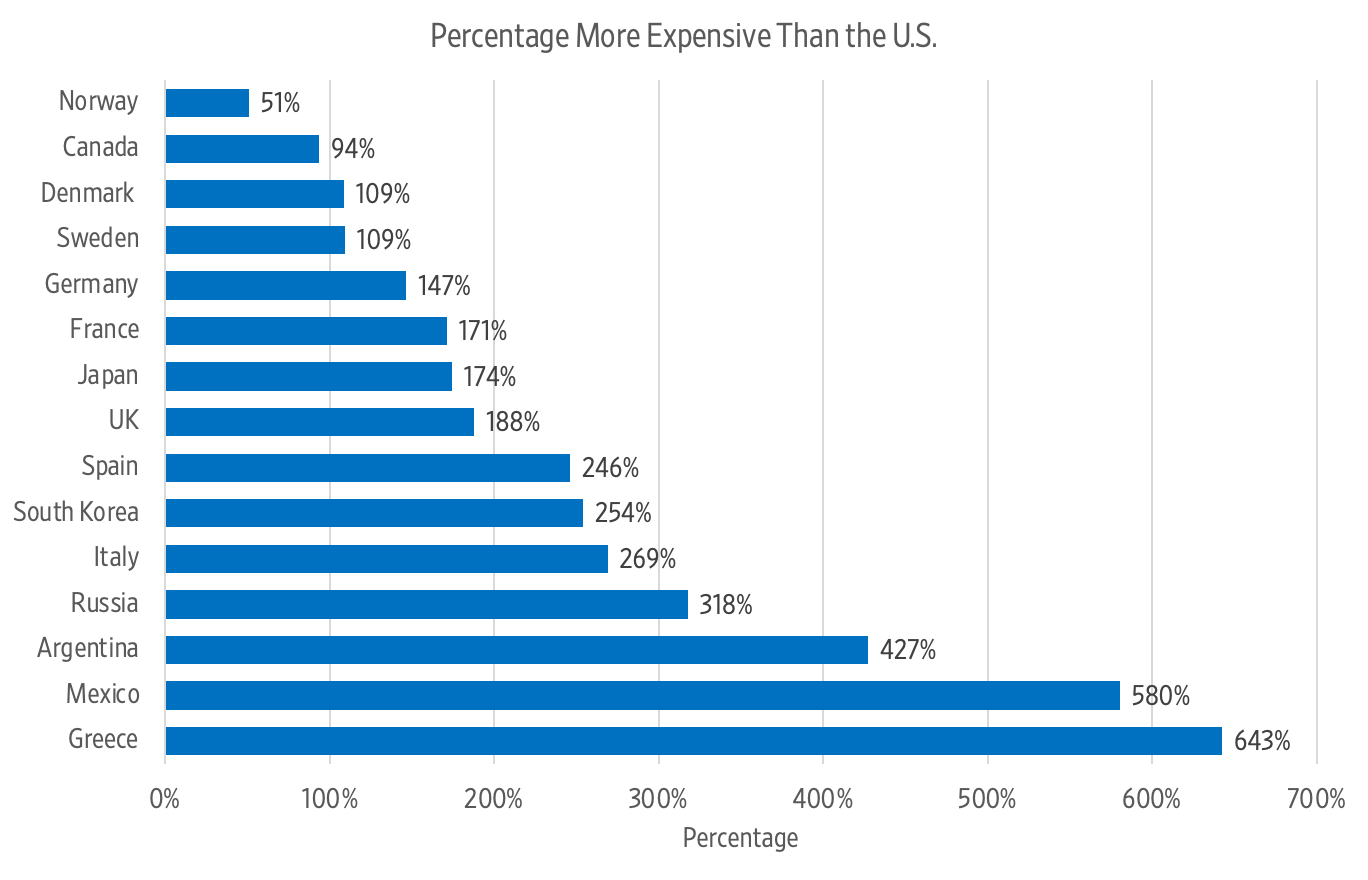Summary: Cordless drills have become much more affordable and abundant over the years, thanks to technological innovation and economic growth. Since its invention in 1961, the time price of a battery-powered cordless drill has decreased by 97.7 percent.
Technically speaking, the first “cordless” drill was the hand-cranked bit and brace drill, which was invented hundreds of years ago. You can still buy one of these classics at Amazon for around $57.
Black and Decker introduced the first battery-powered cordless drill in 1961. “It was a great advance,” Mr. Decker said, “but people weren’t prepared to pay $100 for it.” Blue-collar compensation (wages and benefits) in 1961 averaged $2.60 an hour. This suggests it took around 38.46 hours to earn the money to buy a cordless drill in 1961. No wonder it wasn’t too popular.
Black and Decker’s cordless drill made history in 1971 when NASA’s Apollo 15 mission used one to extract core samples on the moon.
Today you can pick up a Black and Decker cordless drill at Home Depot or Amazon for $29.99. Since 1961, blue-collar hourly compensation has increased to $33.39, so the time price for today’s cordless drill is 0.9 hours or 54 minutes. In 61 years, the time price has decreased by 97.7 percent, from 2,308 minutes down to 54 minutes.
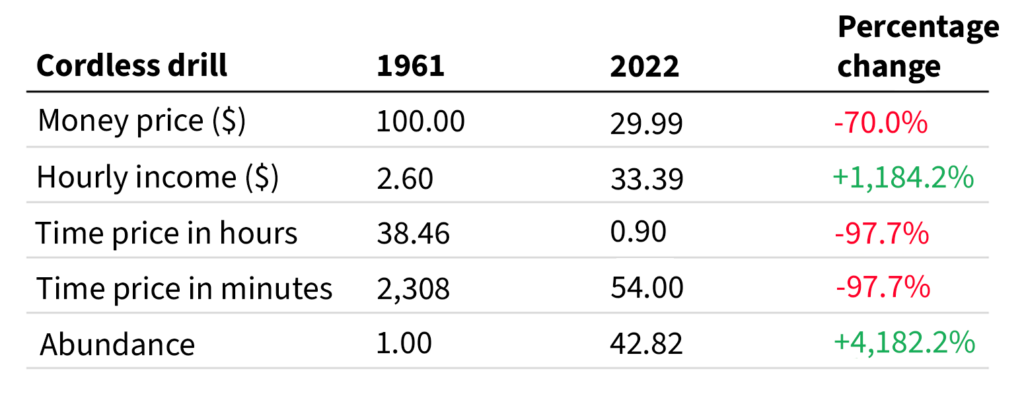
For the time required to earn the money to buy one cordless drill in 1961, you get 42.8 today. Drill abundance has been increasing at a compound annual rate of around 6.35 percent a year.
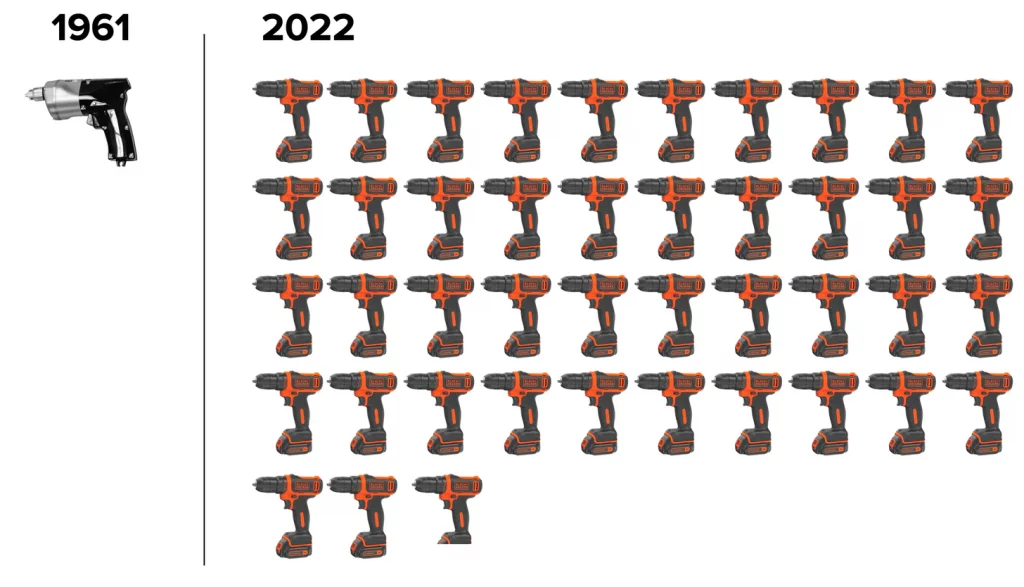
You can learn more about these economic facts and ideas in our forthcoming book, Superabundance, available for pre-order at Amazon. George Gilder calls it a “supremely contrarian book” which overturns “the tables in the temple of conventional thinking” by deploying “rigorous and original data and analysis to proclaim a gospel of abundance. Economics—and ultimately, politics—will be enduringly transformed.”





